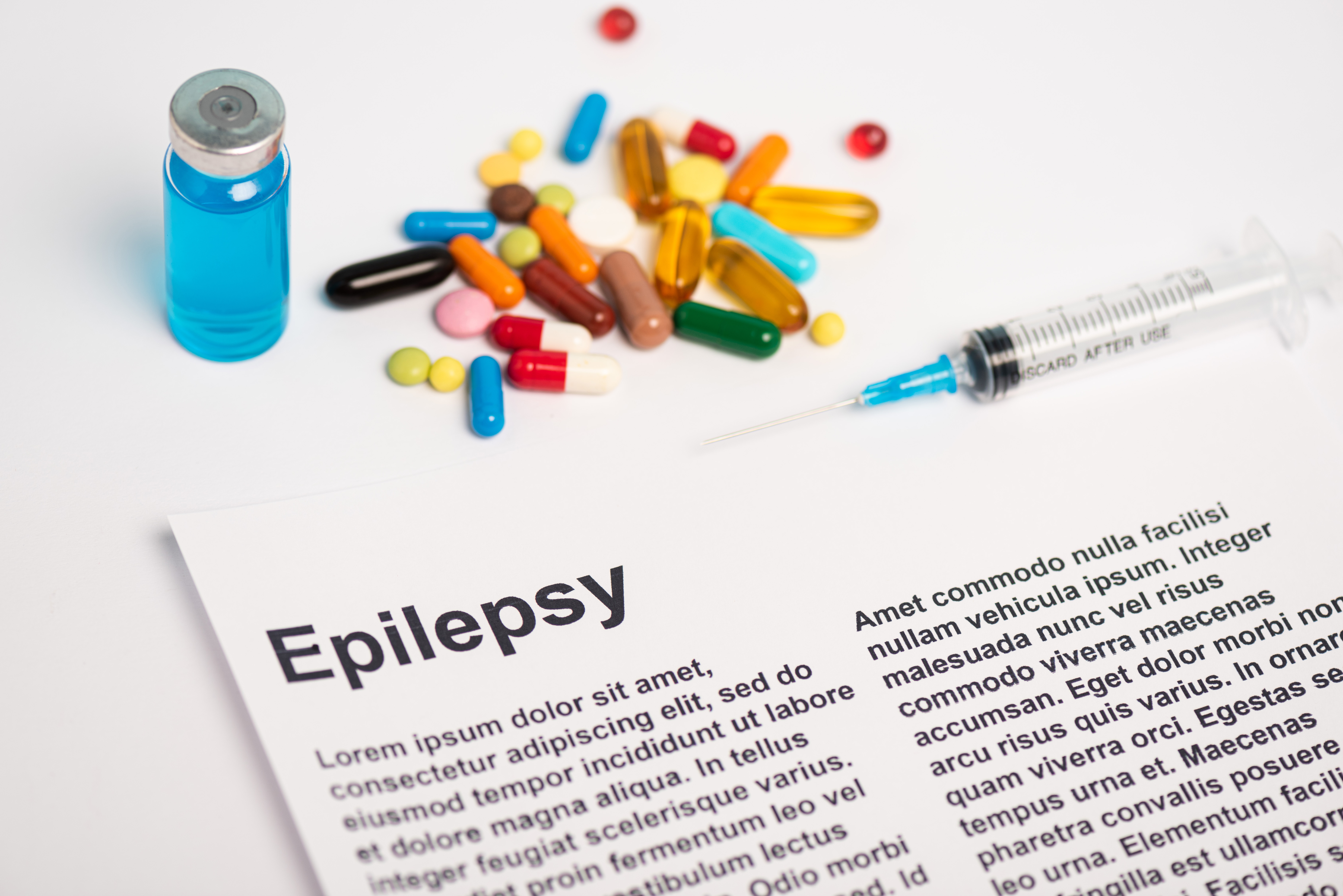13 Little-Known Facts About Gabapentin That Might Surprise You
Gabapentin is a pharmaceutical enigma that has piqued the curiosity of researchers, medical professionals, and patients alike. Initially developed as an antiepileptic drug, its applications have expanded far beyond its original purpose. In this comprehensive exploration, we will delve into 13 astonishing facts about gabapentin that are lesser-known yet significantly impactful. This journey will unravel the complexities of its chemical structure, its multifaceted uses, and the intriguing mechanisms by which it operates within the human body. By the end of this article, readers will gain a profound understanding of gabapentin, appreciating its role as a versatile agent in modern medicine.
1. Where The Story Begins

The story of gabapentin begins in the 1970s when scientists sought a novel treatment for epilepsy. Its development marked a pivotal moment in pharmaceutical history, introducing a drug that would later be recognized for its broad therapeutic potential. Over the years, gabapentin has become a staple in treating neuropathic pain, restless leg syndrome, and even anxiety disorders. However, its journey from a single-purpose drug to a multifaceted therapeutic agent is riddled with fascinating twists and turns that deserve exploration. As we embark on this journey, it is crucial to understand the foundational aspects of gabapentin, including its pharmacokinetics and pharmacodynamics. These elements form the cornerstone of its efficacy and safety profile. Furthermore, the societal and clinical implications of gabapentin's widespread use will be examined, shedding light on its impact on healthcare systems worldwide.
2. The Chemical Structure and Synthesis of Gabapentin

Gabapentin's chemical structure is both simple and profound, contributing to its unique pharmacological properties. It is a structural analogue of gamma-aminobutyric acid (GABA), a neurotransmitter that plays a critical role in regulating neuronal excitability throughout the nervous system. Despite its structural similarity to GABA, gabapentin does not interact directly with GABA receptors. This intriguing aspect of its chemistry is pivotal in understanding its mechanism of action, which diverges from traditional GABAergic drugs. The synthesis of gabapentin involves the cyclization of 1,1-cyclohexane diacetic acid with ammonia, resulting in a compound that is both stable and bioavailable. This synthesis process is a testament to the ingenuity of pharmaceutical chemistry, allowing for the mass production of gabapentin while maintaining its efficacy and safety. The simplicity of its structure belies the complexity of its interactions within the body, making it a fascinating subject of study for chemists and pharmacologists alike. The drug's ability to modulate neurotransmission without directly influencing GABA receptors is a key factor in its versatility. This characteristic enables gabapentin to exert its effects across a range of neurological and psychiatric conditions, making it a valuable tool in the therapeutic arsenal.
3. The Mechanism of Action: Beyond GABA

While gabapentin is structurally similar to GABA, its mechanism of action is distinct and far-reaching. Gabapentin primarily binds to the alpha-2-delta subunit of voltage-gated calcium channels in the central nervous system. This binding reduces the release of excitatory neurotransmitters such as glutamate, norepinephrine, and substance P, thereby modulating neuronal excitability and reducing neuropathic pain. The specificity of this interaction is a cornerstone of gabapentin's efficacy, offering therapeutic benefits without the side effects commonly associated with direct GABAergic modulation. The discovery of gabapentin's unique binding site was a breakthrough in understanding its pharmacological profile. Unlike traditional anticonvulsants, which often act by direct modulation of ion channels or neurotransmitter receptors, gabapentin's indirect approach allows for a more nuanced regulation of neuronal activity. This mechanism is particularly advantageous in treating conditions characterized by hyperexcitability, such as epilepsy and neuropathic pain, where precise modulation can alleviate symptoms without causing sedation or cognitive impairment. Gabapentin's mechanism of action also highlights its potential in treating a variety of off-label conditions. By modulating calcium channel activity, gabapentin can influence a wide array of physiological processes, from pain perception to mood regulation.
4. Gabapentin in Pain Management: A New Frontier

Gabapentin has revolutionized the field of pain management, offering a novel approach to treating neuropathic pain. Traditional analgesics often fall short in addressing the complex mechanisms underlying neuropathic pain, which involves aberrant nerve signaling and heightened sensitivity to stimuli. Gabapentin, with its ability to modulate calcium channel activity, provides targeted relief by reducing the release of excitatory neurotransmitters involved in pain transmission. The efficacy of gabapentin in pain management is supported by numerous clinical trials and real-world studies. Patients with conditions such as diabetic neuropathy, postherpetic neuralgia, and fibromyalgia have reported significant improvements in pain levels and quality of life. Gabapentin's success in these areas has prompted further research into its potential applications in other pain-related disorders, including chronic back pain and migraine prophylaxis. Gabapentin's role in pain management extends beyond its pharmacological effects. It offers a valuable alternative to opioid analgesics, which are associated with significant risks of addiction and adverse effects. By providing effective pain relief without the risk of dependency, gabapentin has become a cornerstone in the development of safer, more sustainable pain management strategies. As the opioid crisis continues to pose challenges to healthcare systems worldwide, gabapentin's contributions to pain management are more relevant than ever.
5. Off-Label Uses: Expanding the Horizons of Gabapentin

Beyond its approved indications, gabapentin has gained recognition for its off-label uses, showcasing its versatility as a therapeutic agent. Physicians have explored its potential in treating a wide range of conditions, from anxiety disorders to restless leg syndrome. These off-label applications are supported by emerging evidence and clinical observations, highlighting gabapentin's ability to address diverse physiological and psychological processes. One notable off-label use of gabapentin is in the treatment of anxiety disorders. Patients with generalized anxiety disorder, social anxiety disorder, and panic disorder have reported improvements in symptoms with gabapentin therapy. Its anxiolytic effects are thought to arise from its modulation of calcium channels and subsequent reduction in excitatory neurotransmitter release. This mechanism offers a promising alternative for patients who do not respond to traditional anxiolytics or who experience adverse effects. Gabapentin has also been used off-label to manage symptoms of alcohol withdrawal, providing a safer option for patients at risk of withdrawal seizures. Its ability to stabilize neuronal activity without the sedative effects of benzodiazepines makes it an attractive choice in this context. As research continues to uncover new applications for gabapentin, its role in off-label treatments is likely to expand, offering hope to patients with conditions that are difficult to manage with existing therapies.
6. Gabapentin and Restless Leg Syndrome: A Promising Solution

Restless leg syndrome (RLS) is a neurological disorder characterized by an uncontrollable urge to move the legs, often accompanied by uncomfortable sensations. The condition can significantly impact sleep quality and overall well-being, posing challenges for both patients and healthcare providers. Gabapentin has emerged as a promising treatment option for RLS, offering relief from symptoms and improving patients' quality of life. The efficacy of gabapentin in treating RLS is attributed to its ability to modulate neuronal excitability and reduce abnormal sensory processing. By binding to the alpha-2-delta subunit of voltage-gated calcium channels, gabapentin decreases the release of neurotransmitters involved in sensory perception, alleviating the uncomfortable sensations associated with RLS. Clinical trials have demonstrated significant improvements in symptom severity and sleep quality among patients treated with gabapentin, supporting its use as a first-line therapy for RLS. Gabapentin's role in managing RLS extends beyond its pharmacological effects. It offers a well-tolerated alternative to dopaminergic agents, which are commonly used to treat RLS but can cause side effects such as nausea and augmentation of symptoms. By providing effective symptom relief with a favorable side effect profile, gabapentin has become an integral part of the therapeutic landscape for RLS, offering hope to patients seeking respite from this challenging condition.
7. The Role of Gabapentin in Epilepsy Management

As one of the original indications for gabapentin, epilepsy management remains a cornerstone of its therapeutic applications. Gabapentin is used as an adjunctive therapy for partial seizures, providing additional seizure control for patients who do not achieve adequate relief with other antiepileptic drugs. Its unique mechanism of action, which involves modulation of calcium channel activity, complements the effects of other antiepileptic agents, enhancing overall seizure management. Gabapentin's role in epilepsy management is supported by clinical studies demonstrating its efficacy in reducing seizure frequency and severity. Patients treated with gabapentin have reported improved seizure control and a reduction in the frequency of breakthrough seizures. Its favorable safety profile, characterized by a low incidence of drug interactions and minimal sedative effects, makes it an attractive option for patients with complex seizure disorders. The use of gabapentin in epilepsy management extends beyond its pharmacological effects. It offers a valuable alternative for patients who experience adverse effects with traditional antiepileptic drugs or who require additional seizure control. By providing effective seizure management with a favorable side effect profile, gabapentin has become an integral part of the therapeutic landscape for epilepsy, offering hope to patients seeking improved seizure control and quality of life.
8. Gabapentin's Impact on Mental Health: A Double-Edged Sword

Gabapentin's effects on mental health are both promising and complex, offering potential benefits while also posing challenges in certain contexts. On one hand, gabapentin has shown promise in treating anxiety disorders, providing relief for patients who do not respond to traditional anxiolytics. Its ability to modulate neurotransmitter release and stabilize neuronal activity offers a novel approach to managing anxiety, with clinical studies demonstrating significant improvements in anxiety symptoms. However, gabapentin's impact on mental health is not without its challenges. Some patients have reported mood changes and depressive symptoms while taking gabapentin, highlighting the need for careful monitoring and individualized treatment plans. The drug's effects on mental health are thought to arise from its influence on neurotransmitter systems, which can have varying effects depending on individual patient factors. The dual nature of gabapentin's impact on mental health underscores the importance of personalized medicine. By tailoring treatment plans to individual patient needs and monitoring for potential side effects, healthcare providers can maximize the benefits of gabapentin while minimizing risks. As research continues to explore the complex relationship between gabapentin and mental health, its role in psychiatric treatment is likely to evolve, offering new opportunities for patients seeking relief from mental health challenges.
9. The Controversy of Gabapentin Misuse and Abuse

Gabapentin's widespread use and availability have led to concerns about its potential for misuse and abuse. While it is not classified as a controlled substance in many jurisdictions, reports of gabapentin misuse have emerged, particularly among individuals with a history of substance abuse. The drug's sedative effects and potential for enhancing the effects of other substances have contributed to its misuse, raising concerns among healthcare providers and policymakers. The potential for gabapentin misuse underscores the importance of responsible prescribing practices and patient education. Healthcare providers must carefully assess the risk of misuse and monitor patients for signs of abuse, particularly in populations at higher risk. By implementing strategies to minimize the potential for misuse, such as prescription monitoring programs and patient education, healthcare systems can mitigate the risks associated with gabapentin use. Despite these challenges, it is important to recognize the legitimate therapeutic benefits of gabapentin for patients who use it appropriately. By balancing the need for effective treatment with the responsibility of minimizing misuse, healthcare providers can ensure that gabapentin remains a valuable tool in the therapeutic arsenal. As the conversation around gabapentin misuse continues, ongoing research and policy efforts will be essential in addressing these complex issues.
10. Gabapentin and the Opioid Crisis: A Safer Alternative

In the context of the opioid crisis, gabapentin has emerged as a potential alternative for managing pain without the risks associated with opioid analgesics. Its ability to provide effective pain relief without the risk of dependency makes it an attractive option for patients and healthcare providers seeking safer pain management strategies. Gabapentin's role in this context is particularly relevant given the ongoing challenges of opioid addiction and overdose. The use of gabapentin as an alternative to opioids is supported by clinical studies demonstrating its efficacy in managing neuropathic pain and reducing opioid consumption. Patients treated with gabapentin have reported significant improvements in pain levels and quality of life, with a reduced need for opioid analgesics. This shift towards non-opioid pain management strategies is an important step in addressing the opioid crisis and improving patient outcomes. However, the use of gabapentin in the context of the opioid crisis is not without challenges. Concerns about gabapentin misuse and the potential for adverse effects highlight the need for careful prescribing practices and patient monitoring. By balancing the benefits of gabapentin with the need to minimize risks, healthcare providers can contribute to safer, more effective pain management strategies. As the opioid crisis continues to evolve, gabapentin's role in pain management will remain a topic of ongoing research and discussion.
11. Gabapentin in Veterinary Medicine: A Growing Field

Gabapentin's therapeutic potential extends beyond human medicine, with growing interest in its use in veterinary medicine. Veterinarians have explored its applications in managing pain and anxiety in animals, offering new options for improving animal welfare and quality of life. Gabapentin's ability to modulate neuronal excitability and reduce pain perception makes it a valuable tool in the veterinary therapeutic arsenal. In veterinary medicine, gabapentin is commonly used to manage chronic pain in animals with conditions such as osteoarthritis and neuropathic pain. Its efficacy in reducing pain and improving mobility has been demonstrated in a variety of species, including dogs and cats. Gabapentin's role in veterinary medicine also extends to managing anxiety-related behaviors, providing relief for animals experiencing stress or anxiety in clinical settings. The use of gabapentin in veterinary medicine is supported by a growing body of research and clinical experience. Veterinarians have reported positive outcomes with gabapentin therapy, highlighting its potential to improve animal welfare and quality of life. As research continues to explore the applications of gabapentin in veterinary medicine, its role in this field is likely to expand, offering new opportunities for improving the health and well-being of animals.
12: The Pharmacokinetics of Gabapentin: Absorption, Distribution, Metabolism, and Excretion

Understanding the pharmacokinetics of gabapentin is essential for optimizing its therapeutic use. Gabapentin is absorbed in the small intestine via a saturable transport mechanism, resulting in variable bioavailability depending on the dose. Its absorption is not affected by food, allowing for flexible dosing regimens. Once absorbed, gabapentin is widely distributed throughout the body, crossing the blood-brain barrier to exert its effects on the central nervous system. Gabapentin is not metabolized by the liver, which distinguishes it from many other drugs and reduces the risk of drug interactions. Instead, it is eliminated unchanged by the kidneys, with a half-life of approximately 5 to 7 hours. This renal excretion pathway necessitates dose adjustments in patients with impaired kidney function to prevent accumulation and potential toxicity. The pharmacokinetics of gabapentin play a critical role in determining its dosing and administration. By understanding these parameters, healthcare providers can tailor treatment plans to individual patient needs, optimizing efficacy while minimizing the risk of adverse effects. As research continues to explore the pharmacokinetic properties of gabapentin, new insights will inform its use in clinical practice, enhancing its therapeutic potential.
13. Gabapentin's Side Effect Profile: Balancing Benefits and Risks

Gabapentin's side effect profile is generally favorable, contributing to its widespread use in clinical practice. Common side effects include dizziness, somnolence, and peripheral edema, which are typically mild and transient. These effects are thought to arise from gabapentin's modulation of neuronal activity and are generally well-tolerated by patients. However, gabapentin's side effect profile is not without challenges. Some patients may experience more severe adverse effects, such as mood changes, cognitive impairment, or gastrointestinal symptoms. These effects highlight the importance of individualized treatment plans and careful monitoring, particularly in patients with complex medical histories or those taking multiple medications. The balance between benefits and risks is a critical consideration in gabapentin therapy. By carefully assessing the risk of side effects and tailoring treatment plans to individual patient needs, healthcare providers can maximize the therapeutic benefits of gabapentin while minimizing the risk of adverse effects. As research continues to explore gabapentin's side effect profile, new insights will inform its use in clinical practice, enhancing its safety and efficacy.
The Remarkable Journey of Gabapentin

The journey of gabapentin is a testament to the power of pharmaceutical innovation and the potential for drugs to evolve beyond their original purpose. From its origins as an antiepileptic drug to its current role in managing a wide range of conditions, gabapentin has demonstrated remarkable versatility and therapeutic potential. Its unique mechanism of action, favorable safety profile, and diverse applications have made it a cornerstone of modern medicine. As we have explored in this article, gabapentin's impact extends far beyond its approved indications, offering hope to patients with challenging conditions and contributing to safer, more effective treatment strategies. Its role in pain management, mental health, and veterinary medicine highlights its broad therapeutic potential, while ongoing research and development efforts continue to expand its applications and optimize its use. The remarkable journey of gabapentin is a story of innovation, adaptability, and the pursuit of better patient care. As we look to the future, gabapentin's legacy will continue to inspire new discoveries and advancements in medicine, offering hope and healing to patients worldwide. As we conclude this exploration, it is clear that gabapentin's story is far from over, with new chapters waiting to be written in the ever-evolving landscape of healthcare.
